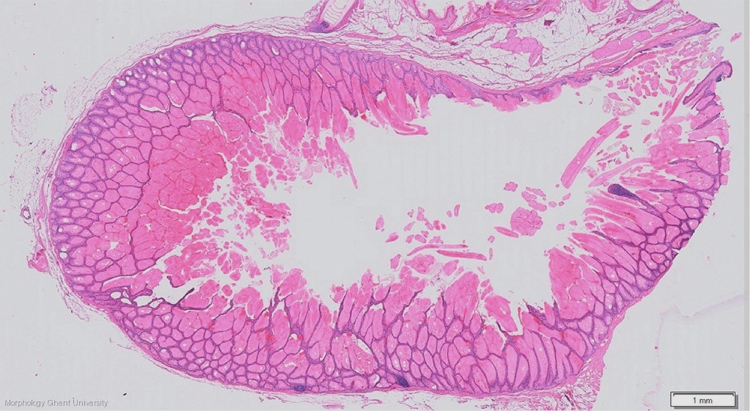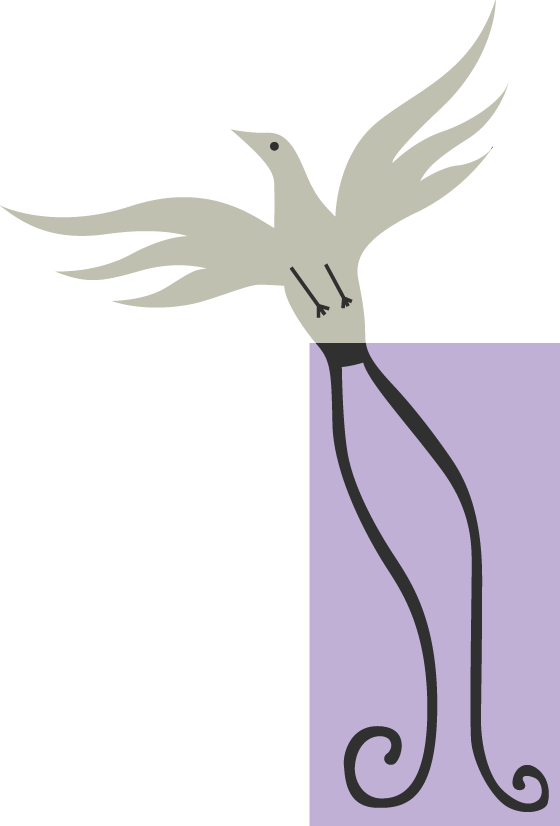Uropygial gland
| « Previous | Next » |
 |
|
Uropygial gland of a chicken (HE): overview
The micrograph above shows one lobe of the preen gland, oil gland or uropygial gland (glandula uropygialis) of a chicken.
The uropygial gland is a bilobed holocrine gland located dorsally at the base of the tail which opens on the skins' surface by a nipple-like papilla. Depending on the species, the skin above the gland can be bare or feathered. The papilla in most birds carries a ring of fine down feathers, the oil gland tuft (circulus uropygialis).
The uropygial gland produces a fatty secrete, the preen oil, that the bird distributes with its beak over its body and wing feathers (preening).
The uropygial gland is strongly developed in many waterbirds, having a waterproofing effect. Some species (Columbidae and some Psittacidae for example) do not have a preen gland. The function of the gland in these birds is replaced by powder-shedding powder downs.
